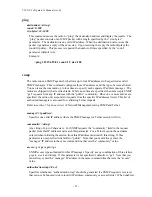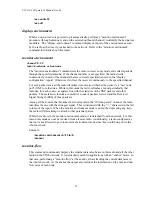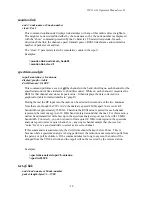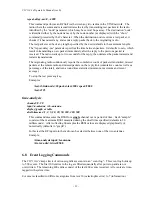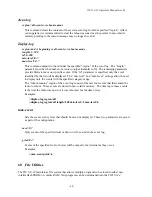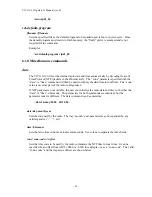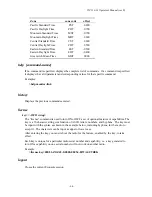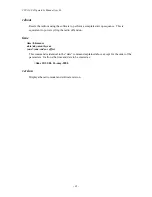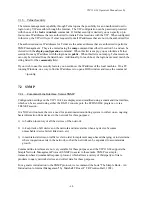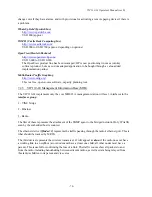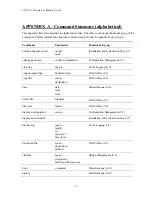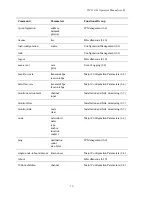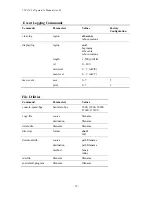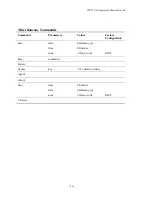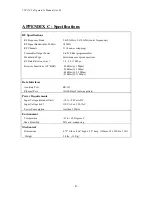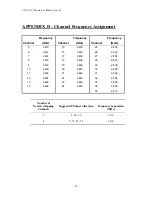
VIP 110-24
Operator’s Manual (rev E)
- 69 -
7.2.2
What is SNMP?
The SNMP protocol is described in the following documents:
•
RFC1157 - Simple Network Management Protocol (SNMP) -
ftp://ftp.isi.edu/in-notes/rfc1157.txt
•
RFC1155 - Structure and identification of management information for TCP/IP-based internets -
ftp://ftp.isi.edu/in-notes/rfc1155.txt
•
RFC1213 - Management Information Base for Network Management of TCP/IP-based internets:
MIB-II -
ftp://ftp.isi.edu/in-notes/rfc1213.txt
SNMP is a specification for the interaction (
protocol
) between the
SNMP agent
embedded in a
network device, and the
SNMP manager
software running on another machine in the network.
The data provided by the SNMP agent in a network device is described by a document called the MIB
(Management Information Base).
MIB-II
describes the basic information provided by all devices,
and additional documents describe optional extensions for components that may not exist in most
devices.
Devices may also provide non-standard MIB groups. In order for a network management system to
make use of these extended features, the MIB description must be obtained from the device
manufacturer and loaded into the management station.
SNMP data travels in IP packets, using the UDP port 161 for the agent, so in order to use SNMP, the
device must have an IP address.
7.2.3
Security Considerations in SNMP
SNMP was designed before the Internet grew commercial, and the original design was not secure.
Later versions intended to provide security, but grew cumbersome and complex. As a result, most
devices provide secure operation in a non-standard way.
The original SNMP design as embedded in the protocol, assigns network devices to named
communities. Any transactions exchanged between the agent and the manager include the name of the
community to which they both belong. The agent has a list of which access rights (set, get, trap) it
will grant for each community of which it is a member.
In the VIP 110-24, this has been re-interpreted: The radio has a list of up to 4 management stations
from which it will accept requests, and for each one - identified by its IP address - it is indicated what
access rights it is granted, and which community string it must use. Requests from all other sources
are ignored. Refer to the
snmp
command in section 6.6 for details on how to configure the radio for
management using SNMP..
If no management stations are listed,
get
-requests with the community
public
will be accepted and
responded to from any IP address.
7.2.4
Examples of Network Management Systems
Some of the most common network management systems are listed below. All of them provide many
similar features, including network status displays showing key devices on a map, where the devices
Summary of Contents for VIP 110-24
Page 2: ......
Page 5: ...VIP 110 24 Operator s Manual rev E iv...
Page 37: ...VIP 110 24 Operator s Manual rev E 30...
Page 73: ...VIP 110 24 Operator s Manual rev E 66...
Page 89: ...VIP 110 24 Operator s Manual rev E 82...
Page 91: ...VIP 110 24 Operator s Manual rev E 84...

